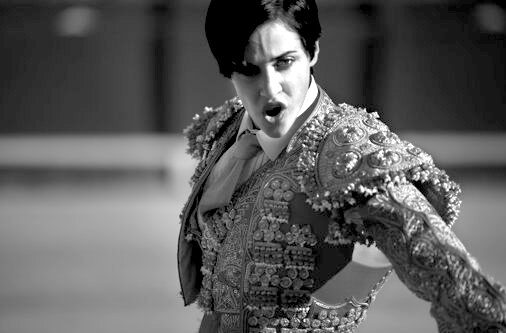During the last decade of the 20th century spectators inside and beyond the borders of Spain saw new ways to experiment with film and to represent the memories and survival strategies of fascism. After a century of constrained and wildly repressed and resisted ways to figure sex, gender, love, and the family, filmmakers like Almodóvar and Medem straddled transnational borders outside of the Peninsula. Other filmmakers straddled these borders inside Spain, navigating histories of repression of regions where citizens did not identify as Spanish (Catalunya, Galicia, the Basque Country, Valencia, Andalucía), where they did not speak Spanish as their mother tongue, and where human beings were simply different.
In this last week of classes we watched a film that experiments beyond Medem’s Lovers with scenarios of escaping fascism and reinventing religiosity. Juan Carlos Medina’s Insensibles / Painless (2014), a fantasia of horror, fantasy, historical memory and ethnic cleansing helps us retrace the various stages of deconstructing Spanish cinema, fascism, and religiosity that we have visited this semester.

For this last blogpost this semester, comment on two other films with which Medina’s Painless dialogues, and how these instances of intertextual dynamics create parodies of fascism and religiosity.

The two films that come to mind when connecting Painless to this course for me are Spirit of the Beehive and Raise Ravens. Raise Ravens and Painless both deal with the issue of memory, particularly the memory of violence. The narrative of David in Painless mirrors that of Ana in Raise Ravens in the reckoning of their parent’s memory; David is forced to rediscover his father’s cruelty in assisting fascists as an executioner while Ana seems to punish her own father for his nationalist and sometimes gendered violence. Interestingly, Ana and David seem to diverge in this reckoning as David seems to come to understand Berkano while Ana detaches herself from the violence of her murdering her own father. Although they share an upbringing by nationalists, David doesn’t repeat his father’s desensitization to violence since he eventually leaves and breaks free from the confining family structure that Ana is shown being trapped by.
Spirit of The Beehive shares themes with Painless in their portrayal of Spain’s social structure under fascism. The family and town in Spirit of The Beehive are simultaneously internally repressive and shockingly detached, similar to the asylum in Painless. The provocation that spurs this structure is the threat against fascism (more specifically, the film Frankenstein and its metaphorical analogue in the communist), and within Painless, it is the existence of the special children. The communist threat is depicted as something monstrous and life-threatening in both movies, but in Painless, it is the very innocence of the children that seems to be so reviling. They cannot be disciplined like the other patients at the asylum into conforming to Franco’s society which leads to their deaths. Except for Berkano, who is mentally broken and indoctrinated into the same mindset that drives the town mob into hunting down their own monster.
The first film I thought of when viewing painless was Viridiana. This film shows many similar elements to Medina’s movie. Firstly is this sense of religiousness saving people. The young children who can’t feel pain are kept in a monastery for control and eventually killed. The monastery here is used to show how religion “saved people” during fascism. This idea of religion being the savior of the public or the damned is also very present in Viridiana. Our main character, Viridiana, attempts to leave her rapist uncle for the convent. She seek refuge in her convent and wants to go back. Ultimately the message of Viridiana is that religion is not necessary for a full independent life for a woman. However the message of Painless is darker as it shows Francos repression of those that are not following social norms. Though the two movies are very different they both see religion as saviors and they both show how religion is not always the savior we want it to be.
Surprisingly enough, another film that Painless reminded me of was Lovers of the Arctic Circle. In this movie two lovers attempt to find each other after their lives were torn apart from each other. However, at the end what ends up separating them is Ana’s injury and subsequent death. In Painless David has lymphoma and needs a bone marrow transplant to survive. His search for his father is led by this and is necessary for his chances of survival since he has a baby now. He’s driven by familial love to survive for his child which is what is keeping him searching for an answer. In lovers of the Arctic Circle, Otto and Anna do this similarly throughout the movie where they keep reaching out to each other because of their love despite the problems it makes in their lives. However in the end what is driving Ana is her love for Otto. We see that even if she is lying dying on the hospital bed, she’s dreaming of their reunion. Lovers of the Arctic Circle and Painless both involve love as a driving force for healing.